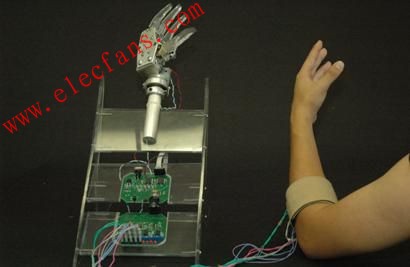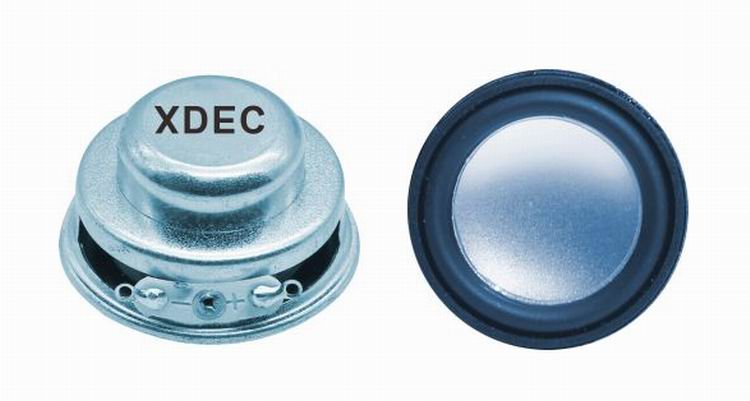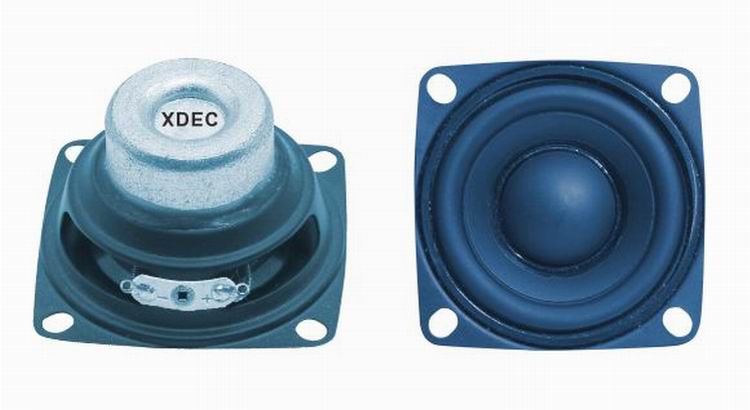The design of medical prosthetic hands is expensive. How to choose the most economical solution to a problem for a product is a difficult problem before designers. MC9S08QE is a cost-effective general-purpose low-power MCU. It has a small package and rich features. It provides excellent investment protection for the solution, so it is very suitable for myoelectric prosthesis (MHP) applications. Please see the introduction of this article.
The design of medical prosthetic hands is expensive. Because of government subsidies, designers in developed countries do not need to be careful. In this way, they can quickly bring their products to market.
Designers in developing countries may not receive government funding, which is why designers must spend more time choosing materials and components for products. They must find the most economical solution to the problem.
A Mexican team of engineering students from the ITESO graduate school of the "Universidad Jesuita de Guadalajara" ITESO designed an electromyography prosthesis, which gave hope to amputated patients who desperately needed affordable health products and services. At the Freescale Black Widow Design Application Grand Prix held in July 2007, the team won the first prize. The team included Gabriel Herrera, Sergio Santana, Missael Maciel, Andres Alvarez, Carlos Soto, Ramon Guillen and Alan Collins.
The myoelectric prosthesis is based on the electrical signals generated by the muscles and simultaneously performs the contraction and relaxation processes.
Myoelectric prosthetic hand (MHP) has 4 different user controller movements (open / close prosthetic hand and right / left wrist). In addition, the system can also adjust the closing movement pressure to support pressures above 100kPa. This pressure is enough to hold the most common objects.

The low-cost MHP uses the MC9S08QE4 microcontroller as the main brain processor.
MC9S08QE is a cost-effective general-purpose low-power MCU. It has a small package and rich features. It provides excellent investment protection for the solution, so it is very suitable for MHP applications.
The prosthetic hand regulator is driven by Freescale's H-bridge device MC33887, and the low-power mode is used to extend battery life.
The MHP senses signals through electrodes in the user's forearm. These signals are in the mV range, so they are processed with an instrumentation amplifier with a gain of 106 ?.
In order to eliminate all non-EMG signals, we designed a second-order low-pass filter and a first-order high-pass filter in the frequency range of 15-400 Hz as the next step of EMG signals. Then use the reference voltage comparator to select a voltage level that eliminates the noise signal from other muscles in the user's forearm. Finally, there is a circuit that drives the correct voltage to the microcontroller keyboard interrupt (KBI) pin.
MC9S08QE4 starts from reset, so the system should check the reset source (power on, low battery voltage, watchdog, illegal operation code, etc.), and then decide what to do according to the reset source.
After the CPU and peripherals are initialized, the microcontroller enters a low-power mode. When an EMG signal is detected, only an external interrupt can wake up the system. Then the system enters the signal capture state. This state will turn off the external interrupt and provide modulo timer interrupt. The microcontroller then enters low-power mode.
When a timer interrupt occurs, the system may wake up from low-power mode. The interrupt frequency implements Nyquist theory. Because the registered higher EMG frequency is 3.125 kHz, the interrupt occurs every 151.5 μs (6.6 kHz) after being configured. In the interrupt subroutine, EMG input signals are checked and their status is registered. Then check the counter. If the configurable count is not reached, the microcontroller enters low-power mode again until another timer interrupt occurs. However, if the configurable count is reached, the microcontroller enters the signal decoding state.
In the signal decoding state, MC9S08QE4 checks which EMG signal has registered more activations within the specified time. The microcontroller then decides which state to execute next: open the prosthetic hand, close the prosthetic hand, move the wrist to the left or move the wrist to the right. However, if the system believes that the electronic pulse caused the microcontroller to wake up from the low-power mode, the system does nothing other than provide an external interrupt and re-enters the low-power mode.
Once the system determines the state to be executed next, the timer / pulse width modulator (PWM) configures the output signal to generate an action in the prosthetic hand. Then the system will enable the external interrupt and enter the low-power mode, waiting for the next myoelectric stimulation.
The analog-to-digital converter (ADC) is used to constantly check the current consumption of the DC motor in order to control the pressure caused by the prosthetic hand closing action. Due to the dedicated hardware provided by the MC33887 H-bridge device (which can get feedback from the power supply that drives the motor), this monitoring is only possible.
MC9S08QE4 has 4KB flash memory and 256KB RAM, which are used for code and data respectively. The resources used and loaded in the microcontroller are: Flash (code): 983 bytes; RAM (data): 35 bytes. This reserves 3KB of flash memory and 221KB of RAM for future upgrades and preloaded motion subroutines.
In the near future, by choosing lighter and stronger materials for mechanical hardware and providing a more beautiful artificial hand, the project will have a major improvement. Designing a more beautiful glove will give users an important psychological advantage.
Now, technological progress can be described as leaps and bounds. Freescale's mission is to continuously adopt and develop these technologies in order to provide a better and wider device family, allowing designers to continuously create and improve dynamic solutions.
In future design changes, Freescale also pointed out the direction. The pin-to-pin functions in the Flexis microcontroller family enable easy application porting between 8-bit and 32-bit MCUs, so that more features can be added to the product.
Freescale is closely watching the problems of developing countries and realizes that our society needs to solve these problems in order to provide a better quality of life for the people living here. A person who has lost his hand will often feel discouraged because he or she may no longer be able to live like other normal people in society. This frustration is not only about physical function, but also about aesthetics. Letting them regain their original physical function and aesthetics is a great honor for Freescale, whether it is as a company, a design team or a member of this society.
Robot speaker is a kind of speaker unit which is used for multimedia devices. Multimedia Speakers have loud sound, wide frequency response range and rich bass.
Our main multimedia speakers are full ranges speakers units:
1) From the diameter: we have speakers in 1" ~ 3".
2) From the power output, we have speakers of 2W ~ 15W.


FAQ
Q1. What is the MOQ?
XDEC: 2000pcs for one model.
Q2. What is the delivery lead time?
XDEC: 20 days for normal orders, 15 days for urgent orders.
Q3. What are the payment methods?
XDEC: T/T, PayPal, Western Union, Money Gram.
Q4. Can you offer samples for testing?
XDEC: Yes, we offer free samples.
Q5. How soon can you send samples?
XDEC: We can send samples in 3-5 days.
Robot Speaker
Robot Speaker ,Bluetooth Robot Speaker,Smart Robot Speaker,Mini Robot Speaker
Shenzhen Xuanda Electronics Co., Ltd. , https://www.xdecspeaker.com